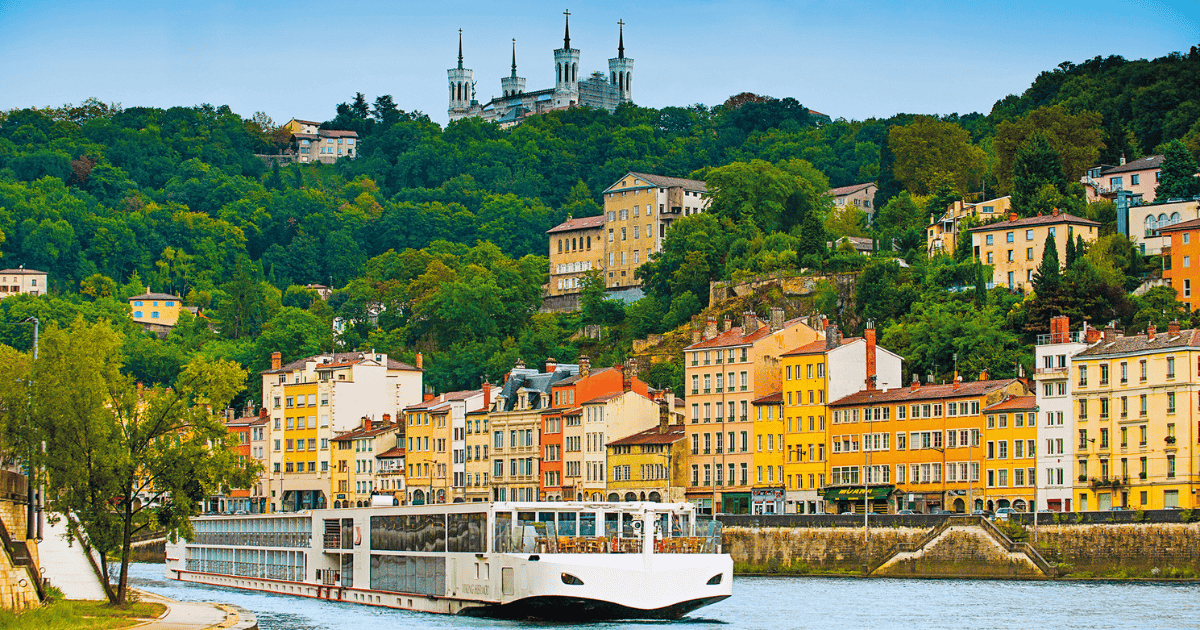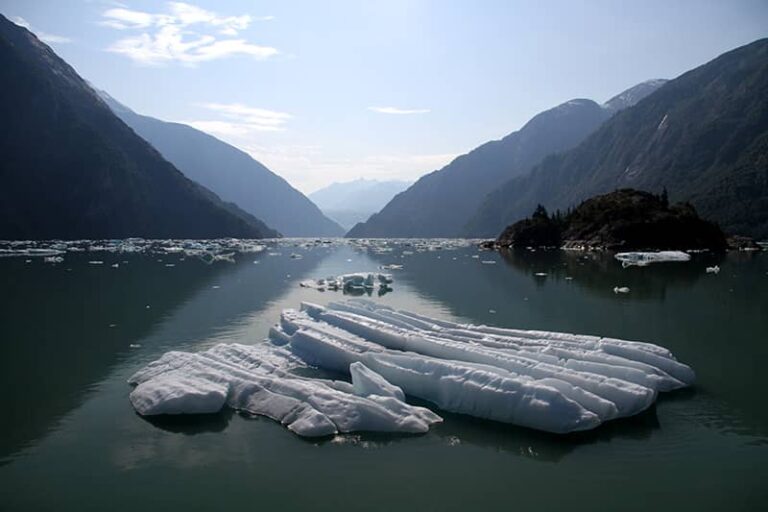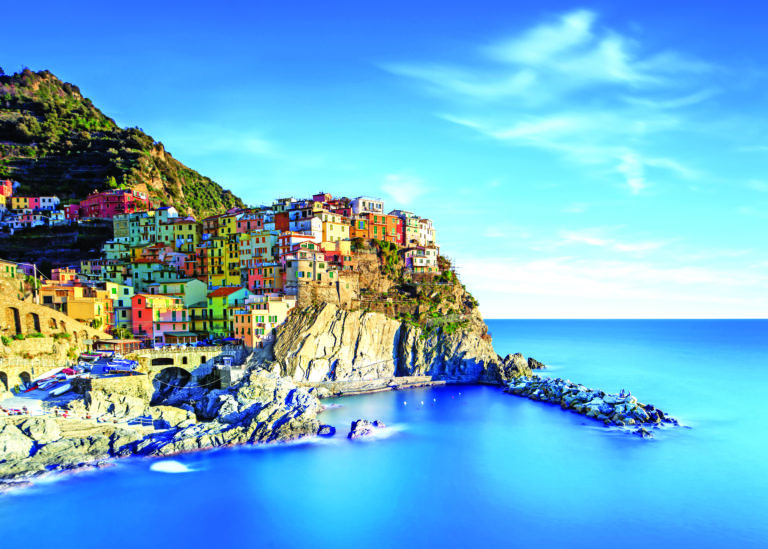Also known as the dish of the day, the plat du jour is a special dish offered in restaurants or cafés and changes daily. It’s often a seasonal or locally inspired menu that showcases the chef’s culinary skills and includes an entrée, main and dessert.
On board the Viking Hermod, Executive Chef Nikolay Kolev visits the local markets along the Rhône River with his team to source produce for his specialty regional menus. His tasting menu changes for each meal. The first night on board, docked in Lyon, fresh apples and strawberries were sourced from the market for the evening’s gateau. Lyon, located in the Rhône-Alpes Region of France, is renowned for its gastronomy and is often considered the culinary capital of the country. France’s third-largest city, Lyon sits above the confluence of the Rhône and Saône Rivers. The city boasts a variety of restaurants, from Michelin-starred establishments to more traditional eateries known as bouchons.
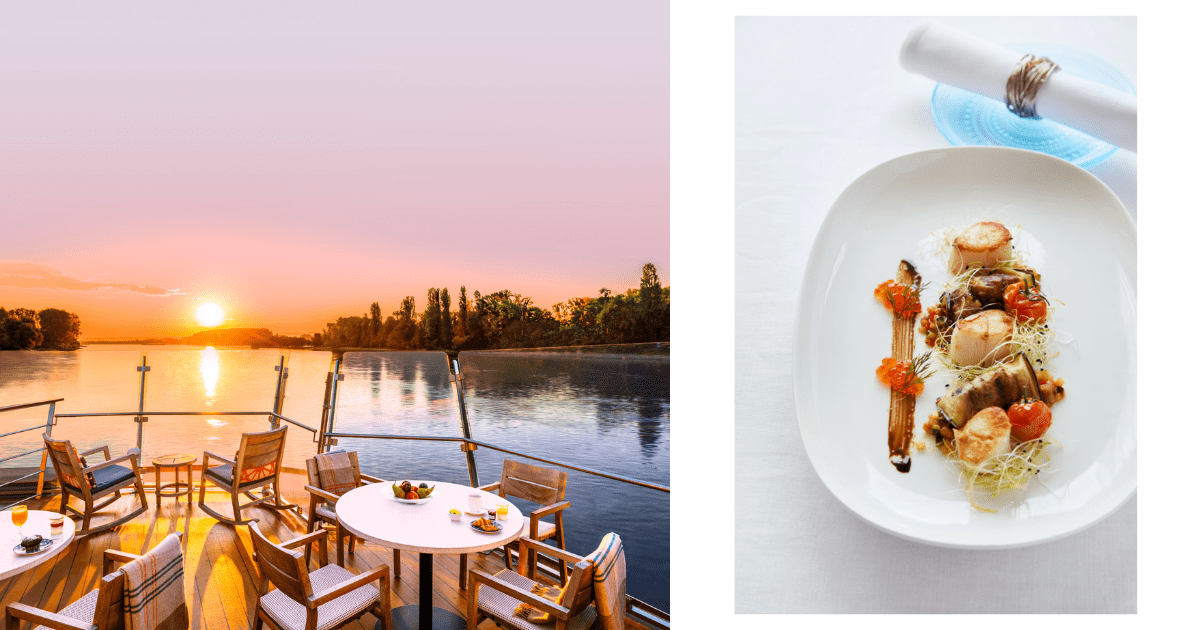
Only the best
Be warned: many restaurants in the area call themselves a bouchon, however there are only 22 verified bouchons in Lyon. The word bouchon literally means ‘cork’ in French, and the name is said to have originated from the practice of placing a cork in a wine bottle to indicate that the wine was of good quality.
To join the association and obtain the Les Bouchons Lyonnais certification and use the Les Bouchons Lyonnais trademark (registered when the association was created), the restaurateur must agree to an audit.
Bouchon Tupins is one of the best in the city. The cosy interior, with its rustic wooden furnishings and vintage décor, transports you to a bygone era. Chef de cuisine, Jean-Guillaume Desormieres’ menu at Bouchon Tupins showcases the rich culinary heritage of Lyon, featuring traditional dishes that have been passed down through generations.
Starters include oeufs en meurette, a classic French dish of poached eggs in red wine sauce, with bacon and mushrooms. Mains are just as simple, including slow-cooked lamb shoulder with wild garlic cream, spring beans and jus or a quenelle Lyonnaise, a traditional pike fish souffle. And to finish the plat du jour, Bouchon Tupins offers local cheeses and the distinctive Lyonnaise Praline Tart featuring bright-red, praline- coated almonds.
Back on board, the Viking Hermod team’s culinary passion shines through their attentive service, guiding you through the regional menus and offering expert wine pairings to enhance the dining experience. The iconic salad Lyonnaise, with its vibrant mix of greens, bacon, and poached egg, is recommended while on board with a cold glass of Beaujolais wine. Especially while visiting Lyon where the salad was created in the 1500s when Catherine de Medici told her chefs to test new dishes using various ingredients found in the region.
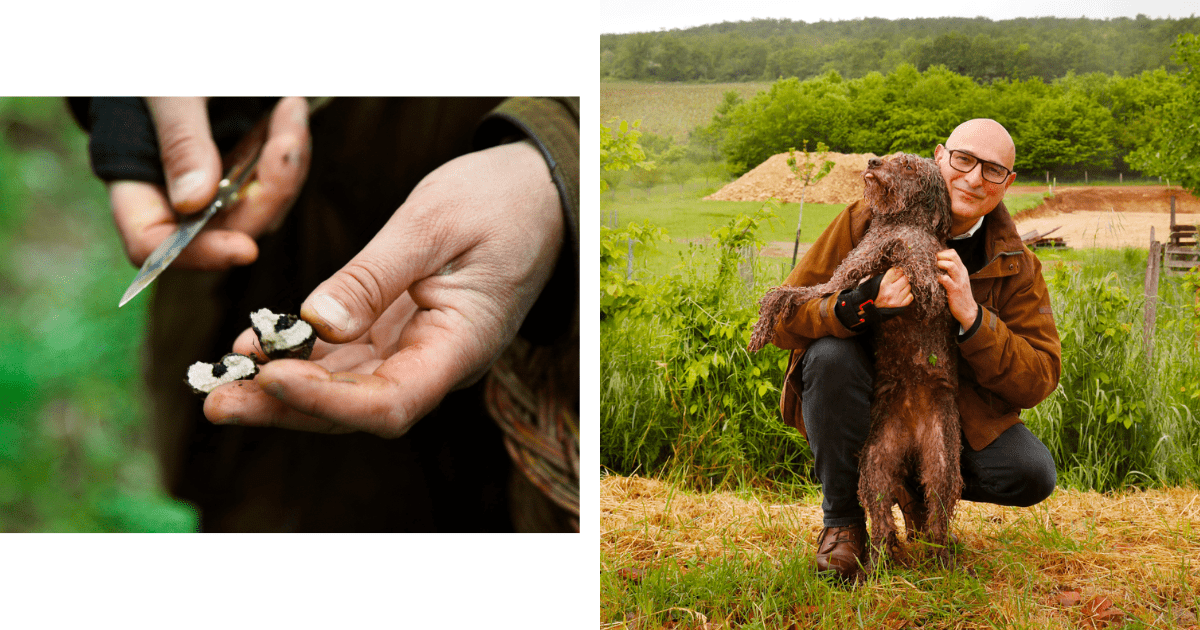
Truffle Treasures
During this voyage from Lyon to Avignon in the south, we visit many vineyards and local producers. A highlight was meeting truffle farmer Oliver on the Beaujolais & Truffle tour, with his playful pup Maestro, who took us on a foraging adventure through the oak trees on his family farm.
The property has been in Oliver’s family for over 100 years producing black truffles, saffron, wild peach liqueur and other gourmet products made from an array of fruits grown in the family orchards. In 2001, Oliver returned to Le Cos-Piguet, his family’s property built in the 17th century in the Mâconnais design and left to his mother from an uncle.
Oliver planted over 1,500 trees inoculated with spores for Burgundy and Périgord black truffles. This technique allows the cultivation of truffles from forest plants. However, it isn’t a quick process. In 2004, Oliver harvested three truffles from the 1,500 trees. It wasn’t until 2012 that the truffles really started growing for commercial production. To date, the largest truffle harvested in the field’s was a 490g Burgundy truffle Each year from the end of August, Oliver starts harvesting, ensuring the truffles are black and firm. Never trust a soft truffle, he says.
He is very particular with his harvesting, almost harvesting to order. In the past Oliver would travel to the local markets and sell directly to consumers. Demand was so high, he sold out in one minute on the first day.
Today Oliver sells direct to the brokers who sell into the local restaurants. He can receive an order in the morning, take Maestro out to forage and by dinner time the truffles are brushed clean and on the menu around the region. Oliver believes leaving the truffles in the ground, rather than the fridge, is better for the flavour.
The season lasts until the end of March, with the deeper-rooted truffles delivering better flavour and quality. The Périgord truffles smell like dark chocolate, with tiny white veins running through each morsel, whereas the Burgundy black truffle is more forest-like, delivering a nutty, earthy flavour. Back inside the house at Le Cos-Piguet, Oliver serves lunch, weaving truffle into every dish of his plat du jour styled menu. His beef bourguignon is served with cauliflower, crusty bread and grains, the truffle delicately added into the stew as it slow-cooked on the stove for eight hours. The flavour is delicate and perfect for the grey day outside. He has paired the dish with local wines, including a pinot noir which is popular in this region.
Unlike every other Frenchman, Oliver doesn’t eat dairy; fortunately this doesn’t stop him serving cheese. Oliver has taken Brillat-Savarin, a soft-ripened triple cream cow’s milk cheese from the local fromagerie, and sliced the whole wheel in half horizontally, grating a thick lush layer of Burgundy truffle through the middle. Served with more crusty bread, the cheese is the highlight of lunch. For dessert, Oliver serves a dairy-free chocolate mousse with truffle grated throughout. A delicacy that is a first for everyone around the table.
Viking cruises include all you need, and nothing you don’t. Which means more cheese back on board the ship. The evening’s cultural enrichment presentation includes a delicious tasting of local cheese matched with local wines. The culinary teams are eager to share each port’s specialties with the guests. The chocolate fondant-making class was a highlight for all, followed by an afternoon of French pastries and tea in the Lounge.
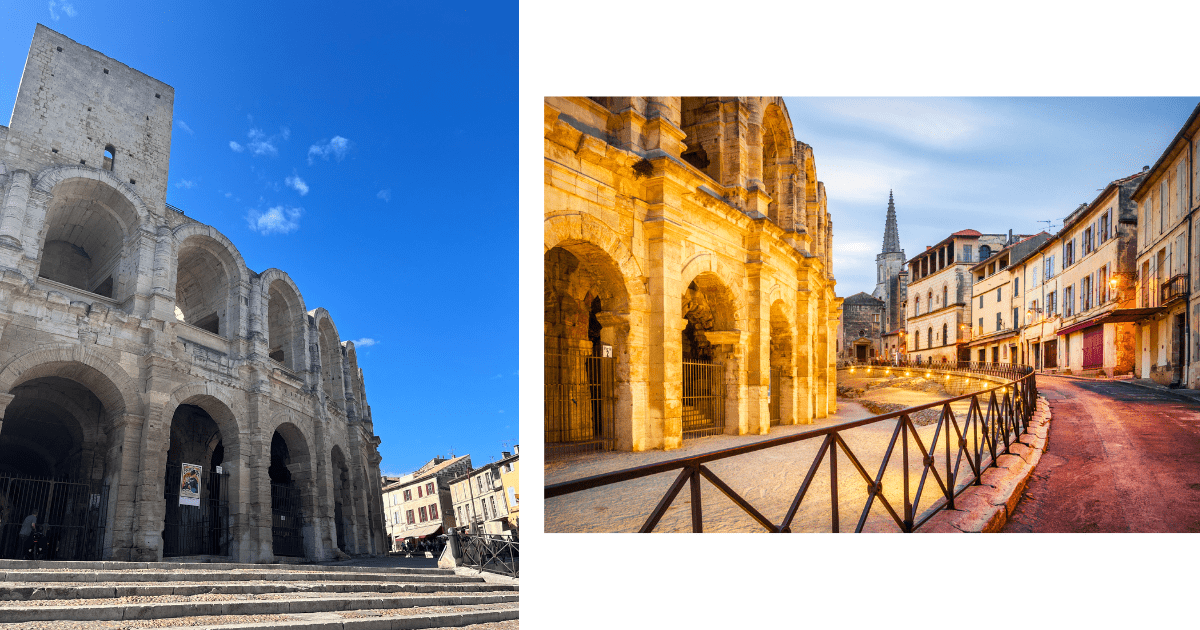
Heaven on Earth
The Rhône River has served as a vital link to Northern Europe throughout history and many of the major vineyards along the banks of the river date back to the ancient Romans. The wine-producing region of Beaujolais is larger than any single district in Burgundy, with more than 55,000 acres of vines planted. Different to what we are used to in New Zealand or Australia, the vines in this region are grown in the traditional Roman ‘goblet’ style. The vines are typically pruned to have a single trunk, resembling bushes or small trees, rather than creeping vines. Wine growers believe this pruning style leads to better fruit quality and flavour development.
The Appellation d’Origine Contrôlée in France regulates the production of wine and food throughout the country. Each region has a specific method of production and standards which they must adhere to in order to use the authentic mark of origin. This rich cultural practice means growers in the 12 Beaujolais appellations can only grow Gamay grapes.
Further south, in the Hermitage region, vineyards are situated on a steep slope along the western bank of the Rhône River. The region’s terroir is characterised by granite soils mixed with clay and limestone, which contribute to the characteristics of the wines.
A hike through the meticulously cultivated vineyards showcases the steep terrain, however is rewarded with a wine tasting at Cave de Tain followed by a tasting at Valrhona chocolates.
Unlike the lighter styles in Beaujolais, the syrah wines made in the Hermitage region are full bodied with intense flavours of dark berries and earthy nuances.
The carefully curated itinerary sails Viking Hermod into charming Viviers at dusk. A museum to the open sky, as the guide describes the small town sitting on the right bank of the Rhône River, Viviers is known for its rich history, picturesque setting, and well-preserved medieval architecture. The winding streets lead up to the Viviers Cathedral, also known as Cathédrale Saint-Vincent de Viviers, an impressive Romanesque cathedral perched up on the hill, a surreal location to be as the moon rises.
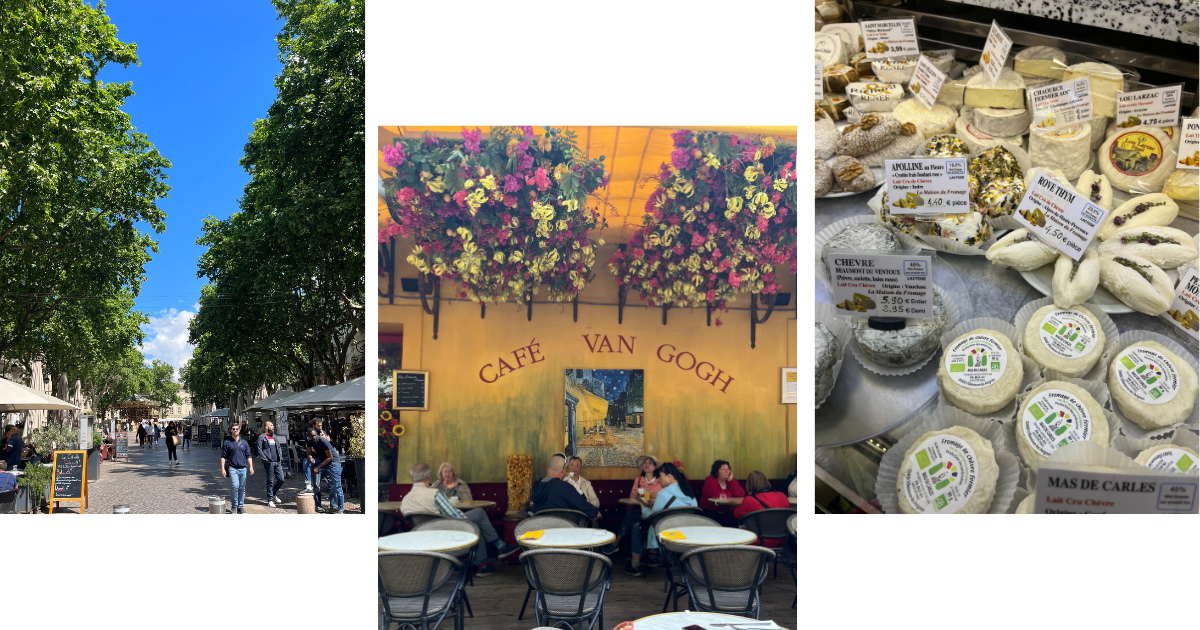
A Fascinating Heritage
Through another lock, Viking Hermod arrives in Arles, a historic, culturally rich city located in the Provence- Alpes-Côte d’Azur region of southern France.
Arles has a fascinating heritage that spans over 2,000 years, blending Roman ruins, medieval architecture, and a vibrant artistic legacy thanks to Dutch painter Vincent van Gogh. The city’s picturesque streets, charming squares, and scenic landscapes inspired many of his famous works, including ‘Starry Night Over the Rhône’ and ‘Café Terrace at Night’. Van Gogh enthusiasts can visit the Espace Van Gogh, formerly the hospital where the artist stayed and now a tourist attraction, and explore the Fondation Vincent van Gogh Arles, which exhibits his art and examines his time in Arles.
The city’s Provençal charm extends to its cuisine, with local specialties such as gardianne de taureau, a bull stew cooked in red wine and olives, and served with the rice of Camargue.
It is also here we discover calissons, which are stacked high in local sweet shops. The small almond- like treats are made of almond meal and citrus-topped royal icing. Their shape evokes the smile of Jeanne de Laval. Her husband, King René, requested his confectioner invent the new sweet for his Queen on their wedding in 1454.
Meanwhile, Avignon, the ‘City of Popes’ is the final destination for this voyage, which ironically leads us to Châteauneuf-du-Pape, the Pope’s wine. Under the Appellation d’Origine Contrôlée, 18 different varieties of grapes are grown in the region which can all be blended, unlike regions such as Beaujolais. This is the first region on the journey to grow such a wide variety of grapes and is also one of the most prestigious appellations of the southern Rhône Valley. It is in Avignon that our guide introduces us to the Les Halles d’Avignon. The vibrant and bustling fresh food market is a culinary haven where locals and visitors immerse themselves in a sensory feast of bright colours and enticing aromas. The abundance of fresh, local produce is a gateway to the region’s gastronomic treasures, including spring flowers chèvre, a soft goat cheese with a subtle, elegant taste that is covered in dried flowers.
Indulging in Provençal food and wine along the Rhône River is a sensory journey that captures the essence of the region’s culinary heritage. It is pure joy after a busy day exploring each region, to return to the Aquavit Terrace of Viking Hermod.
While the sun gracefully sets, guests sit and marvel, enjoying a refreshing glass of Provençal wine and the locally inspired plat du jour. Bon voyage!
For more details, visit vikingcruises.com


